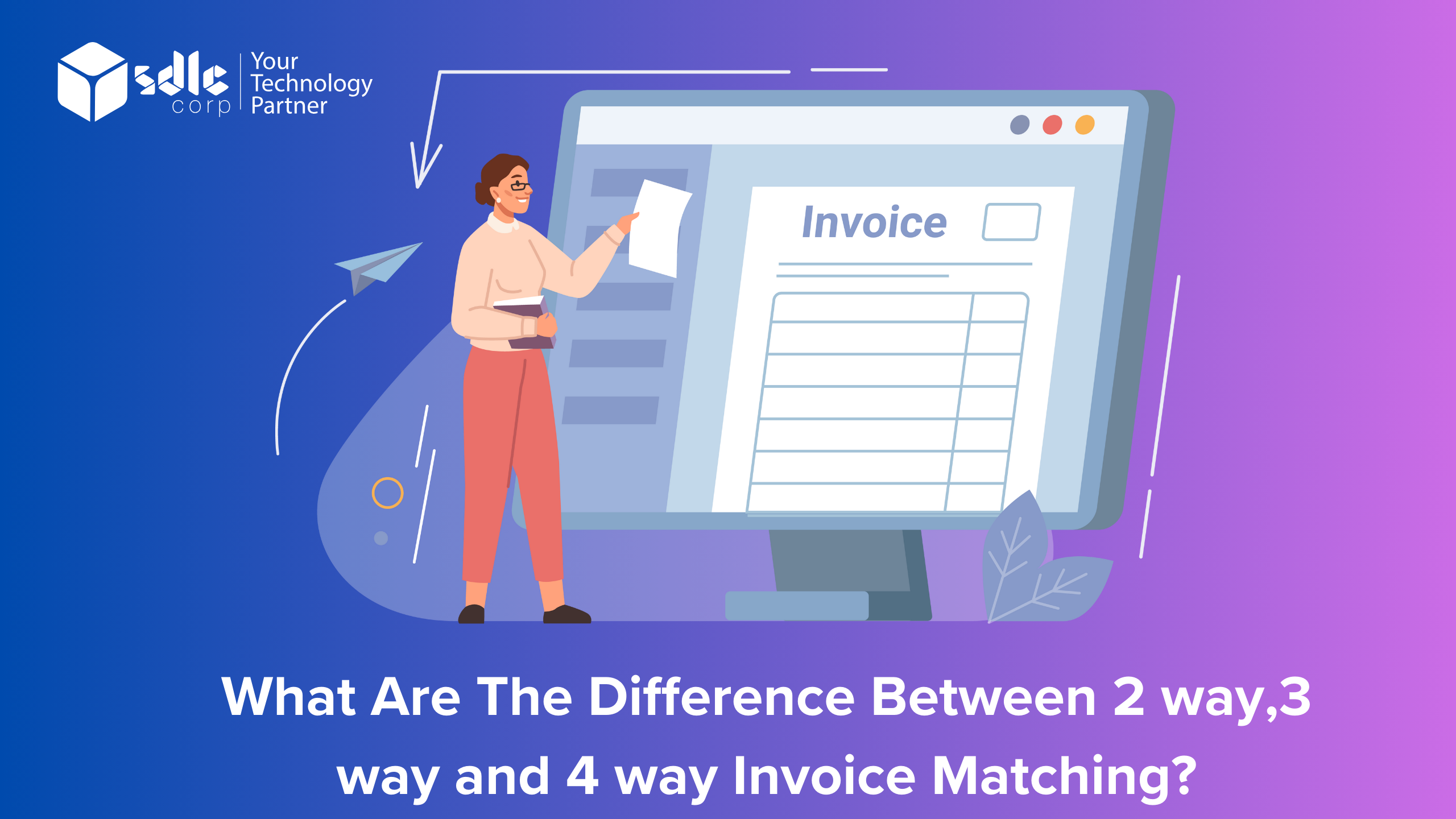What are the best practices involved in the accounts payable process for businesses in 2024?
In the realm of financial management, maintaining a streamlined and efficient accounts payable process is paramount for businesses of all sizes. Accounts payable (AP) serves as the backbone of a company’s financial operations, encompassing the management of outgoing payments to vendors, suppliers, and creditors. A well-structured AP process not only ensures timely disbursement of funds but also fosters strong vendor relationships and financial transparency.
This comprehensive guide aims to delve into the intricacies of the accounts payable process, covering everything from its fundamental principles to advanced strategies for optimization. Whether you’re a seasoned financial professional looking to refine your practices or a newcomer seeking a foundational understanding, this guide will serve as a valuable resource.
Throughout this exploration, we’ll examine the core components of accounts payable, elucidate key terminology, and outline the sequential steps involved in the AP lifecycle. Additionally, we’ll spotlight common challenges faced by AP departments and propose effective solutions to mitigate risks and enhance operational efficiency. From invoice receipt and validation to payment authorization and reconciliation, each stage of the accounts payable process plays a pivotal role in maintaining fiscal integrity and facilitating business continuity. By embracing best practices and leveraging innovative technologies, organisations can empower their AP teams to navigate complex financial landscapes with confidence and precision.
Whether you’re aiming to streamline workflow procedures, fortify internal controls, or harness automation to drive productivity, this guide will equip you with the knowledge and tools necessary to optimise your accounts payable processes effectively. Prepare to embark on a journey towards financial proficiency and operational excellence as we unravel the intricacies of accounts payable management.
How its work?
Managing accounts payable is a critical aspect of financial operations for businesses of all sizes. It involves the process of tracking and managing outgoing payments to vendors, suppliers, and creditors. In today’s digital age, various payment methods, including PayPal wire transfer, have become integral parts of the accounts payable process. This guide aims to provide a thorough understanding of the accounts payable process, including how PayPal wire transfer fits into the picture.
1. Understanding Accounts Payable:
– Definition: Accounts payable (AP) refers to the money a company owes to its suppliers or vendors for goods or services purchased on credit.
– Importance: Effective management of accounts payable ensures timely payment to vendors, maintains good relationships with suppliers, and optimizes cash flow.
2. Accounts Payable Process:
– Invoice Receipt: The process begins with the receipt of an invoice from the supplier for goods or services provided.
– Invoice Verification: The received invoice is verified against purchase orders, delivery receipts, and contracts to ensure accuracy.
– Approval: Once verified, the invoice is approved for payment by authorized personnel within the organization.
– Payment Processing: After approval, the payment is processed through the chosen payment method.
– Reconciliation: Finally, the payment is reconciled with the company’s financial records to ensure accuracy and completeness.
3. Payment Methods in Accounts Payable:
– Traditional Methods: These include checks, electronic funds transfers (EFTs), and Automated Clearing House (ACH) payments.
– Digital Payment Platforms: With the rise of online transactions, digital payment platforms like PayPal have gained popularity for their convenience and security.
– PayPal Wire Transfer: PayPal offers a wire transfer service that allows users to send funds directly to the recipient’s bank account.
4. Incorporating PayPal Wire Transfer into Accounts Payable:
– Setup: To use PayPal wire transfer for accounts payable, businesses need to set up a PayPal business account and link it to their bank account.
– Payment Process: Once set up, payments can be initiated through the PayPal platform by entering the recipient’s bank account details and the amount to be transferred.
– Security Measures: PayPal offers robust security measures, including encryption and fraud detection, to safeguard transactions.
– Record Keeping: It’s essential to maintain proper records of PayPal wire transfers, including transaction details and confirmation receipts, for reconciliation and auditing purposes.
5. Advantages of PayPal Wire Transfer in Accounts Payable:
– Speed: PayPal wire transfers are generally faster than traditional payment methods, allowing for quicker settlement of invoices.
– Convenience: The user-friendly interface of PayPal makes it easy to initiate and track payments, streamlining the accounts payable process.
– Global Reach: PayPal supports international payments, enabling businesses to make cross-border transactions efficiently.
What is the accounts payable process?
Accounts Payable Process:
- Invoice Receipt:
The process typically begins when the company receives invoices from its suppliers for goods or services provided. Invoices can be received via mail, email, or electronically through various platforms.
- Invoice Verification:
Upon receipt, invoices undergo a verification process to ensure accuracy and validity. This involves matching the details on the invoice with purchase orders, delivery receipts, and contracts to confirm that the goods or services were received as agreed upon and that the prices and quantities are correct.
- Approval Workflow:
Once invoices are verified, they are sent through an approval workflow. This may involve routing the invoices to different departments or individuals for approval based on predetermined rules or thresholds. For instance, a purchase manager may need to approve invoices for purchases within their department.
- Recording in the Accounting System:
Once approved, the invoices are recorded in the company’s accounting system. This involves entering relevant details such as the invoice number, date, amount, and vendor information into the system. This step ensures that the company maintains accurate records of its financial transactions.
- Payment Processing:
After recording, the invoices are scheduled for payment based on their due dates and payment terms negotiated with the vendors. Payments can be made through various methods such as checks, electronic transfers, or online payment platforms.
- Reconciliation:
Periodically, the accounts payable department reconciles its records with those of the vendors to ensure that all payments have been accurately processed and accounted for. Any discrepancies or outstanding balances are investigated and resolved promptly.
- Reporting:
Finally, the accounts payable process involves generating reports to track and analyze various metrics such as outstanding liabilities, aging of payables, vendor performance, and cash flow projections. These reports provide valuable insights for decision-making and financial planning.
In recent times, the integration of technology such as QR code scanners has streamlined the accounts payable process further. QR code scanners allow for quick and accurate capture of invoice information, reducing manual data entry errors and speeding up the verification and approval process. By simply scanning the QR code on an invoice, relevant details can be automatically extracted and entered into the accounting system, saving time and improving efficiency.
What is the Full cycle accounts payable process?
The full cycle accounts payable process refers to the complete set of activities involved in managing and processing a company’s payable accounts from the time a purchase is initiated until the payment is made and recorded. Here’s a detailed breakdown of the full cycle accounts payable process:
- 1. Invoice Receipt: The process begins when the company receives an invoice from a vendor for goods or services rendered. Invoices can be received through various channels such as mail, email, or electronic data interchange (EDI).
- 2. Invoice Verification: Upon receipt, the accounts payable department verifies that the invoice is accurate, matches the purchase order and receiving documentation, and complies with the company’s policies and procedures This step ensures that the company is only paying for goods or services that were actually received and agreed upon.
- 3. Purchase Order Matching: If a purchase order was issued for the transaction, the accounts payable team matches the details on the invoice with the corresponding purchase order and receives a report to ensure consistency and accuracy. This step helps prevent errors and discrepancies in billing.
- 4. Approval Workflow: Once the invoice is verified and matched, it may need to go through an approval workflow depending on the company’s internal procedures. Typically, designated individuals or departments review and approve invoices based on predetermined criteria such as budget allocation and authorization limits.
- 5. Entry into the Accounting System: After approval, the invoice details are entered into the company’s accounting system or enterprise resource planning (ERP) software. This involves recording the transaction, assigning appropriate general ledger codes, and updating the accounts payable ledger.
- 6. Payment Scheduling: The accounts payable department determines the payment schedule based on payment terms negotiated with the vendor. This may involve taking advantage of early payment discounts or adhering to agreed-upon payment terms to maintain positive vendor relationships.
- 7. Payment Authorization: Before payments are made, they typically require authorization from authorized personnel within the company. This ensures that payments are legitimate and comply with company policies.
- 8. Payment Processing: Once authorized, payments are processed through the company’s chosen payment method, which could include electronic funds transfer (EFT), checks, wire transfers, or corporate credit cards.
- 9. Reconciliation: After payments are made, the accounts payable team reconciles vendor statements with the company’s records to ensure that all payments are accurately accounted for and any discrepancies are resolved promptly.
- 10. Reporting and Analysis: Throughout the accounts payable process, various reports and analyses may be generated to track spending, monitor payment performance, and identify opportunities for process improvement or cost savings.
- 11. Vendor Communication: Effective communication with vendors is essential throughout the entire process to address any inquiries, resolve disputes, and maintain positive relationships.
- 12. Archiving and Documentation: Finally, all relevant documentation, including invoices, purchase orders, approvals, and payment records, should be properly archived and retained for auditing purposes and future reference.
Streamlining Accounts Payable Processes: A Comprehensive Guide
Why is accounts payable management important?
Effective accounts payable management is crucial for the financial health and operational efficiency of any organization. It encompasses the processes and systems that businesses use to manage their outstanding obligations to suppliers and vendors. One primary reason for its importance lies in cash flow management. By carefully monitoring accounts payable, businesses can optimize their cash flow by ensuring that payments are made on time to take advantage of discounts for early payments while avoiding penalties for late payments. This helps in maintaining good relationships with suppliers, which can lead to favorable credit terms and discounts, ultimately reducing costs. Moreover, efficient accounts payable management provides transparency and accuracy in financial reporting, ensuring compliance with regulatory requirements and providing stakeholders with a clear picture of the company’s financial position.
It also enables better decision-making by providing timely insights into cash flow projections and liabilities. Additionally, effective accounts payable management helps streamline processes, reducing the risk of errors and fraud, and enhancing overall operational efficiency. Overall, accounts payable management plays a vital role in sustaining liquidity, fostering supplier relationships, ensuring compliance, and optimizing operational performance, making it an indispensable aspect of financial management for businesses of all sizes.
What is the AP workflow process?
The AP (Accounts Payable) workflow process refers to the systematic sequence of steps involved in managing and processing invoices and payments within an organization. It is a crucial aspect of financial management, particularly in ensuring timely payments to vendors and suppliers while maintaining accurate records of financial transactions. Here’s a detailed description of the AP workflow process:
- Invoice Receipt:
– The AP process begins with the receipt of invoices from vendors or suppliers for goods or services rendered.
– Invoices may be received in various formats, including physical copies, emails, or electronic documents.
- Document Scanning and Data Capture:
– Physical invoices are scanned and converted into electronic format, while electronic invoices are directly imported into the AP system.
– Data capture technology may be employed to extract key information from invoices such as vendor name, invoice number, date, due date, amounts, and line items.
- Invoice Verification and Approval:
– Invoices are then verified against purchase orders, contracts, or service agreements to ensure accuracy and compliance with terms and conditions.
– Approval workflows are initiated where invoices are routed to appropriate stakeholders for review and approval. This may involve department heads, managers, or designated approvers based on predefined rules and thresholds.
– Any discrepancies or exceptions identified during the verification process are addressed and resolved through communication with vendors or internal stakeholders.
- Coding and Allocation:
– Approved invoices are coded with relevant account codes, cost centers, and project codes for proper allocation of expenses within the organization’s accounting system.
– Accurate coding ensures expenses are correctly attributed to specific budgets or departments, facilitating budget tracking and financial reporting.
- Data Entry and Recording:
– Invoice details, including approved amounts, coding information, and payment terms, are entered into the accounting system or ERP (Enterprise Resource Planning) software.
– This step involves updating the organization’s financial records to reflect the liabilities associated with the invoices.
- Payment Processing:
– Once invoices are recorded in the system, payment processing begins based on agreed-upon terms such as net payment due date or early payment discounts.
– Payment methods may include electronic funds transfer (EFT), checks, wire transfers, or electronic payment platforms.
– Payment runs are scheduled periodically to ensure timely settlement of invoices while optimizing cash flow management.
- Reconciliation and Reporting:
– Following payment execution, AP staff reconcile payments with corresponding invoices and vendor statements to ensure accuracy and resolve any discrepancies.
– Comprehensive reporting is generated to provide insights into AP performance metrics such as invoice processing time, payment accuracy, and vendor relationships.
– Financial reports generated from AP data contribute to management decision-making processes and regulatory compliance requirements.
- Vendor Management and Communication:
– AP staff maintain ongoing communication with vendors regarding invoice status, payment inquiries, and resolution of any issues or disputes.
– Building and nurturing positive vendor relationships are essential for ensuring smooth AP operations and fostering a collaborative business environment.
- Record Retention and Compliance:
– In accordance with regulatory requirements and internal policies, AP maintains records of invoices, payments, and related documentation for audit purposes.
– Proper record retention ensures transparency, accountability, and compliance with legal and financial regulations.
- Continuous Improvement:
– AP process improvement initiatives are regularly undertaken to streamline workflows, enhance efficiency, and mitigate risks.
– Leveraging technology solutions, automation, and best practices helps optimize AP operations and deliver tangible business value.
Benefits
Efficiency: A comprehensive guide to navigating the accounts payable process provides detailed insights into optimizing workflows, streamlining processes, and eliminating bottlenecks. By implementing efficient practices outlined in the guide, businesses can significantly reduce the time and resources required for managing accounts payable tasks.
Accuracy: Accuracy is paramount in accounts payable to ensure that invoices are processed correctly and payments are made on time. A comprehensive guide offers strategies for implementing rigorous verification processes, reconciling accounts, and maintaining accurate records. By following these guidelines, businesses can minimize errors and discrepancies, enhancing overall financial accuracy and reliability.
Compliance: Navigating the accounts payable process involves adhering to various regulatory requirements and compliance standards. A comprehensive guide provides detailed information on relevant regulations, such as tax laws, financial reporting standards, and vendor payment terms. By staying informed and compliant, businesses can avoid penalties, fines, and legal issues associated with non-compliance.
Cost Reduction: Inefficient accounts payable processes can result in unnecessary costs, such as late payment fees, duplicate payments, and manual processing expenses. By implementing cost-saving strategies outlined in the guide, such as optimizing cash flow, negotiating favorable payment terms with vendors, and leveraging early payment discounts, businesses can reduce expenses and improve profitability.
Vendor Relationships: Effective accounts payable management is essential for maintaining positive relationships with vendors and suppliers. A comprehensive guide offers tips for communicating effectively with vendors, resolving disputes, and ensuring timely payments. By fostering strong vendor relationships, businesses can enhance collaboration, negotiate favorable terms, and secure discounts or incentives.
Automation: Automation plays a crucial role in modernizing accounts payable processes and increasing efficiency. A comprehensive guide explores automation technologies, such as invoice scanning, electronic payments, and workflow automation software. By leveraging automation tools and solutions, businesses can streamline repetitive tasks, reduce manual errors, and improve productivity.
Reporting and Analysis: Effective reporting and analysis are essential for gaining insights into accounts payable performance, identifying trends, and making informed financial decisions. A comprehensive guide provides guidance on generating meaningful reports, analyzing key performance indicators (KPIs), and identifying areas for improvement. By utilizing data-driven insights, businesses can optimize processes, allocate resources effectively, and drive strategic decision-making.
Risk Management: Accounts payable processes are vulnerable to various risks, including fraud, errors, and supplier disruptions. A comprehensive guide offers strategies for mitigating risks, such as implementing internal controls, conducting regular audits, and enhancing cybersecurity measures. By proactively managing risks, businesses can safeguard assets, protect sensitive information, and ensure business continuity.
Scalability: As businesses grow and evolve, their accounts payable processes need to adapt to accommodate changing needs and increasing transaction volumes. A comprehensive guide provides scalable solutions and best practices for managing accounts payable effectively across different stages of growth. By implementing flexible processes and scalable technologies, businesses can support expansion efforts and maintain operational efficiency.
Integration: Accounts payable is interconnected with other financial processes and systems, such as procurement, inventory management, and general ledger accounting. A comprehensive guide explores integration strategies and technologies for seamless data flow and communication between different systems. By integrating accounts payable with other financial systems, businesses can streamline processes, improve data accuracy, and enhance overall operational efficiency.
Documents associated with the accounts payable processes.
Documents associated with the accounts payable processes encompass a range of crucial paperwork integral to the efficient management and tracking of financial obligations within an organisation. At the forefront of these documents lies invoices, which serve as the primary record of goods or services purchased, their respective costs, terms of payment, and vendor details. Invoices may come in various forms, including paper and electronic formats, each requiring meticulous scrutiny for accuracy and compliance with established protocols.
Additionally, purchase orders play a pivotal role, delineating the specifics of procurement arrangements agreed upon with suppliers, such as quantities, prices, and delivery schedules. Receipts represent another vital component, validating the receipt of goods or services and serving as evidence for authorization of payments. Supporting documentation, such as contracts, agreements, and delivery confirmations, further fortify the accounts payable process, ensuring transparency, accountability, and adherence to contractual obligations.
Moreover, payment vouchers or disbursement records document the issuance of payments, including the method, date, and amount disbursed, facilitating comprehensive financial record-keeping and audit trails. Comprehensive documentation not only facilitates the accurate recording and timely processing of financial transactions but also underpins effective budgeting, forecasting, and decision-making processes within the organization.
Challenges in the AP Process
Challenges in the Accounts Payable (AP) process encompass issues such as manual data entry errors, delayed invoice approvals, and discrepancies between invoices and purchase orders. Additionally, managing a high volume of invoices, ensuring compliance with regulations, and optimizing vendor relationships pose ongoing challenges for efficient AP operations. Efficiently addressing these challenges is crucial for maintaining accurate financial records and fostering strong supplier relationships.
Time delays
Time delays refer to the lag or latency between the initiation of a process or action and its actual execution or completion. They can arise due to various factors such as technological limitations, processing times, or communication bottlenecks, often impacting efficiency and responsiveness in systems or operations.
Matching errors
Matching errors occur when there is a discrepancy or inconsistency between two corresponding elements, such as data sets, patterns, or criteria. These errors often result in inaccuracies, misinterpretations, or failures to properly align information, leading to potential setbacks or complications in various processes or analyses.
Exception management
Exception management is the systematic handling of unexpected events or errors that occur during the execution of a program or system. It involves identifying, logging, and appropriately responding to exceptions to ensure the stability and reliability of software applications.
Unnecessary purchases
Unnecessary purchases refer to buying items that are not essential or serve no practical purpose, often driven by impulse or societal pressure rather than genuine need. These purchases can lead to financial strain, clutter, and a lack of fulfillment.
Fraud and theft
Fraud involves deliberate deception for financial gain, often through misrepresentation or false claims, while theft is the unlawful taking of someone else’s property without permission, typically with the intention of permanently depriving them of it. Both acts undermine trust and integrity within society and can have serious legal consequences.
Missing documents
“Missing documents” refers to the absence of essential paperwork, files, or records within a system or organization. It often poses challenges in information retrieval, decision-making processes, and regulatory compliance, necessitating thorough investigation and remedial actions to restore integrity and functionality to the document management system.
Double payment
Double payment refers to a situation where a payment is mistakenly issued or processed twice for the same transaction or service, resulting in an unintended duplicate charge. This error can occur due to technical glitches, human error, or miscommunication between parties involved in the payment process, leading to potential financial inconvenience and the need for reimbursement or rectification.
Blind spots
Blind spots refer to areas within one’s perception or understanding where they lack awareness or insight, often leading to overlooked information or biases. These can occur in various contexts, such as personal beliefs, cultural perspectives, or cognitive biases, hindering comprehensive decision-making and understanding of situations.
"Streamlining Accounts Payable with Barcode Scanner Integration: A Step-by-Step Guide "
Streamlining the accounts payable process & AP cycle
Streamlining the accounts payable (AP) process and AP cycle is crucial for businesses to enhance efficiency, reduce errors, and optimize cash flow management. Below is a detailed description of the steps involved in streamlining the AP process and cycle:
- Assessment of Current Process:
– Begin by thoroughly evaluating the existing AP process. Identify bottlenecks, redundancies, and inefficiencies in the workflow.
– Gather feedback from employees involved in the AP process to understand pain points and areas for improvement.
- Implement Automation Solutions:
– Invest in AP automation software that can streamline various tasks such as invoice processing, approval workflows, and payment scheduling.
– Automation can significantly reduce manual data entry, minimize errors, and expedite the overall AP cycle.
- Standardize Procedures:
– Establish standardized procedures for invoice submission, coding, approval routing, and payment processing.
– Clearly communicate these procedures to all stakeholders and ensure compliance across the organization.
- Vendor Management Optimization:
– Maintain an updated vendor database with accurate contact information and payment terms.
– Negotiate favorable terms with vendors to optimize cash flow, such as early payment discounts or extended payment terms.
- Electronic Invoicing Adoption:
– Encourage vendors to submit electronic invoices whenever possible.
– Electronic invoicing reduces paper-based processes, speeds up invoice delivery, and facilitates automated data capture.
- Streamlined Approval Workflows:
– Design streamlined approval workflows with predefined rules and thresholds.
– Implement electronic approval systems to enable faster review and approval cycles, reducing delays in processing invoices.
- Invoice Matching and Verification:
– Implement automated invoice matching solutions to reconcile invoices with purchase orders and receive reports.
– Verify the accuracy of invoices and resolve discrepancies promptly to avoid payment delays.
- Real-Time Reporting and Analytics:
– Utilize AP reporting and analytics tools to gain insights into spending patterns, invoice aging, and vendor performance.
– Monitor key performance indicators (KPIs) such as invoice processing time, invoice accuracy, and early payment discounts captured.
- Secure Payment Processes:
– Strengthen security measures to prevent fraudulent activities such as invoice fraud or unauthorized payments.
– Implement multi-factor authentication for payment approvals and encryption for sensitive financial data.
- Continuous Improvement and Optimization:
– Regularly review and refine the AP process based on performance metrics and feedback.
– Stay updated on industry best practices and emerging technologies to continuously optimize the AP cycle.
By implementing these strategies, businesses can streamline their accounts payable process and AP cycle, resulting in improved efficiency, reduced costs, and better cash flow management.
Streamlining Accounts Payable with Barcode Scanner Integration: A Step-by-Step Guide
- Understanding the Role of Barcode Scanner Integration:
Before delving into the specifics, it’s crucial to grasp the significance of barcode scanner integration in automating the accounts payable process. Barcode scanners simplify data entry, minimize errors, and expedite the reconciliation of invoices with corresponding purchase orders and receipts.
- Selecting the Right Barcode Scanner System:
Begin by researching and selecting a barcode scanner system that seamlessly integrates with your accounting software. Opt for a system that offers compatibility, reliability, and scalability to accommodate your organization’s needs.
- Setting Up the Barcode Scanner System:
Once you’ve chosen the appropriate barcode scanner system, follow the manufacturer’s instructions to set it up effectively. This typically involves connecting the scanner to your computer or mobile device, installing any necessary software or drivers, and configuring settings as per your preferences.
- Creating Barcode Labels for Invoices and Receipts:
Generate barcode labels for invoices and receipts using your accounting software or dedicated barcode label software. Ensure that each label contains essential information such as invoice number, vendor name, date, and amount, encoded in a scannable format.
- Scanning Invoices and Receipts:
Train your accounts payable team on how to use the barcode scanner efficiently. When processing invoices and receipts, instruct them to scan the corresponding barcode labels to automatically input data into the accounting system. This eliminates manual data entry errors and accelerates the processing time.
- Validating Data Accuracy:
Despite the automation provided by barcode scanners, it’s essential to conduct periodic checks to verify the accuracy of scanned data. Implement reconciliation procedures to ensure that invoices match purchase orders and receipts accurately. Address any discrepancies promptly to maintain data integrity.
- Continuous Monitoring and Optimization:
Regularly monitor the performance of your barcode scanner integration and identify areas for improvement. Solicit feedback from your accounts payable team to address any operational challenges or technical issues. Consider leveraging advanced features of the barcode scanner system, such as batch scanning or mobile integration, to further streamline the accounts payable process.
By following these steps and leveraging barcode scanner integration effectively, you can transform your accounts payable process, minimizing manual intervention, reducing errors, and maximizing efficiency on autopilot.
Conclusion
In navigating the accounts payable process, it becomes evident that efficiency and accuracy are paramount for the financial health of any organization. This comprehensive guide has shed light on the intricacies involved in managing accounts payable, from invoice receipt to payment disbursement. By emphasizing the importance of clear communication, streamlined workflows, and robust systems, businesses can mitigate risks, prevent errors, and optimize cash flow. Furthermore, embracing technological solutions such as automated invoicing, digital approvals, and data analytics can significantly enhance efficiency and reduce manual errors. Additionally, fostering strong vendor relationships through timely payments and transparent communication fosters trust and paves the way for mutually beneficial partnerships. Ultimately, by implementing the best practices outlined in this guide, organizations can strengthen their accounts payable processes, bolster financial stability, and drive sustainable growth in the dynamic landscape of modern business.
FAQs
1. How crucial is it for businesses to prioritize efficiency in their accounts payable processes?
Efficiency is paramount in accounts payable processes as it directly impacts financial health. Streamlined workflows and accurate processing ensure timely payments, prevent errors, and optimize cash flow, all of which are vital for sustainable operations.
2. What role does technology play in modernizing accounts payable processes?
Technology plays a pivotal role in modernizing accounts payable processes by offering solutions such as automated invoicing, digital approvals, and data analytics. These technologies enhance efficiency, reduce manual errors, and provide valuable insights for decision-making.
3. How can businesses maintain strong vendor relationships through their accounts payable practices?
Businesses can maintain strong vendor relationships by prioritizing timely payments, transparent communication, and fair treatment. Clear communication regarding payment terms and addressing any concerns promptly fosters trust and cultivates long-term partnerships.
4. Why is it important to implement best practices outlined in guides like this one for managing accounts payable?
Implementing best practices ensures that businesses adhere to industry standards, mitigate risks, and maximize efficiency in their accounts payable processes. Following these guidelines helps prevent errors, reduce costs, and optimize resource allocation.
5. How can businesses measure the effectiveness of their accounts payable processes?
Businesses can measure the effectiveness of their accounts payable processes by tracking key performance indicators (KPIs) such as invoice processing time, error rates, and vendor satisfaction. Regular assessments allow for continuous improvement and adaptation to changing business needs.
Contact Us
Let's Talk About Your Project
















